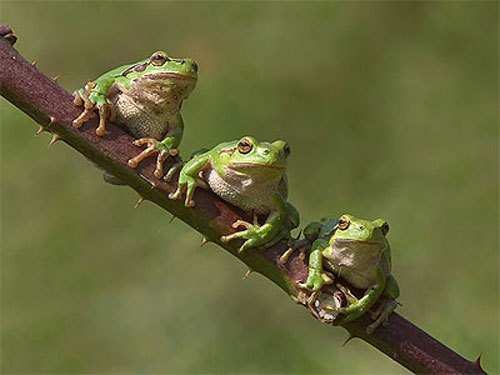Ecological Imbalance Causing Manifold Increase in Vector Borne Diseases
The untimely demise of the iconic Yash Chopra by dengue came as a shock to the whole nation. When even the elite in India are becoming victims to vector borne diseases, what is to become of the common-man? The reasons for the increase in vector borne diseases are ecological imbalance and global warming. The increasing human population and its fooding habits are playing are adding to it.

The untimely demise of the iconic Yash Chopra by dengue came as a shock to the whole nation. When even the elite in India are becoming victims to vector borne diseases, what is to become of the common-man?
The reasons for the increase in vector borne diseases are ecological imbalance and global warming. The increasing human population and its fooding habits are playing are adding to it.
Frogs are almost wiped out from our subcontinent. The government has allowed frog farmers to export frog legs but under the pretext of this, frogs from other water bodies are also captured for export. In 1984 Raza H. Tehsin raised his voice against the export of frog legs from India to control the increasing malaria. Many newspapers across the world covered this news. Banswara district in Rajasthan alone exported 200 tonnes of frog legs annually. The government took the required step and curbed the export of frog legs then. Today, we’ve again reached the same situation.
The rice fields, which used to be full of frogs, have hardly any frogs now. Frogs are the major predators of mosquito larvae. In every weltland – flowing or stagnant – there was abundance of frogs, which survived largely on mosquito eggs and larvae. Frogs from the water bodies have dwindled and the mosquito population increased manifolds. Today, it has become difficult even to click a good photograph of frog in its wild condition.
Ground water level has gone down drastically and almost all wells have dried. We’ve to depend on tube wells for supply of water. The water spilled from the tube wells and collected around them serves as a major breeding ground for mosquito larvae.
With the increase in global warming, the top soil dries up in summers considerably. In the northern hemisphere frogs hibernate underground in the moist soil. When the soil dries, they suffer severely.
In almost all the water bodies and wetlands of India there were numerous small fish. Most of them are called weed fish like Silver Fish, Glass Fish, Putty. The number of weed fish species found in different water bodies has not yet been surveyed and ascertained. They are captured mercilessly to prepare fish pickle. The pickle from fresh water weed fish are delicious and most of the pickle makers concentrate on these fish. Even in small stagnant waters in bygone days one could see weed fish. Their population in our rivers, lakes, ponds, dams has crashed. Most of these fish prey upon larvae and aquatic insects. As their population has reduced considerably, the population of mosquitoes has gone up.
Many exotic fish are introduced in the water bodies for commercial purposes. There is no study to see how this affects the ecosystem of our water bodies. Some of the introduced fish are voracious carnivores, like tilapia and mongoor, which feed on small fish.
In all the major and small water bodies fisheries department releases fingerlings of five to six fish species that grow rapidly, so that they can be harvested in a year’s time. The government and Panchayats give fish contracts. Some small lakes and ponds near villages, which dry up in summers, are also stocked with these fingerlings. Before the ponds dry, the fish have to be harvested. There are millions of wetlands, small and big, in our country.
There is no available data for these wetlands about the number of species surviving there. From several years, the process of introducing quick harvesting fish species is going on. Many small species of fish, which are not only predators for vector larvae but also a very important link in the food chain, have depleted. The fingerlings of these carnivore weed fish too are predators of larvae. With their dwindling numbers malaria, dangue, chicken guinea and other vector born diseases are increasing all over India.
There still is time to rectify these follies by introducing and increasing the population of weed fish in water bodies and wetlands and curbing the export of frog legs. Also, the government should carry out breeding of frogs and weed fish and restock the water bodies.
To join us on Facebook Click Here and Subscribe to UdaipurTimes Broadcast channels on GoogleNews | Telegram | Signal


